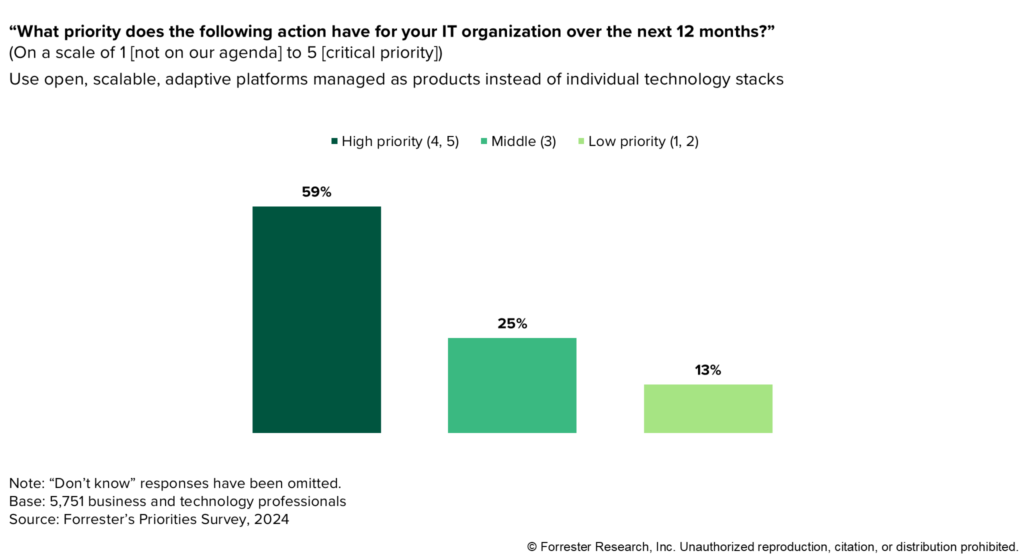Drive Scale And Speed With The Platform Org Model
Ever felt like your organization is a maze of disconnected teams, each working in its own bubble? You’re not alone. Many companies have tried to increase delivery speed with small, agile teams but have ended up with a bunch of siloed squads instead of a cohesive unit. Enter the platform org structure — an increasingly popular option to break down silos and deliver scale.
Small, Autonomous Teams Have Failed To Deliver On Their Promise
In their search for more customer focus and speed, many organizations have turned to the promise of small delivery teams. Multiple incarnations of small, agile team models have emerged, such as holacracy, teal, or podularity. These models have failed to deliver on their promises, however, as agile was often not embraced “end to end,” especially in larger organizations, and infrastructure and operations were kept out of the game. Hence, while expecting speed, organizations ended up with:
- Siloed squads: autonomous teams that became quasi-standalone entities with a build bias, duplicating efforts and creating tech debt during product development.
- Speedboats in molasses: teams sprinting toward deployment in an ocean of bottlenecks due to dependency sprawl and lack of reusable modular capabilities.
- Governance nightmares: increased bureaucracy to force alignment and resolve dependencies, adding frustration and slowing down progress.
Platform Teams Complement Product Teams
High-performing IT organizations are increasingly turning to platform teams to drive speed, scale, and alignment across their product teams. Consolidating shared capabilities that are consumed by multiple product teams drives scale through standardization and speed through modularity and developer experience. The result? Faster, more adaptive organizations that can compose new products and experiences with ease.
- Shared capabilities: Platform teams deliver shared capabilities with a product mindset, ensuring consistent governance and reducing the need for custom solutions.
- Speed and scale: By reusing existing platform capabilities, organizations can scale quickly and efficiently.
- Matrix challenges resolved: Platform teams orchestrate demand from product teams, replacing complex dependency management with streamlined prioritization.
- Standardization and automation: Platform teams drive standardization and automation of shared capabilities, incrementally increasing efficiency and effectiveness.

But You Must Overcome These Common Challenges
Of course, no model is perfect. The platform org model comes with its own set of challenges. Firstly, crafting a platform strategy is no simple task. Secondly, finding the right skills to drive a platform culture can be tricky, especially as platform teams need to walk a fine line between driving standardization and catering to the needs of product developers. But organizations that are willing to put in the work are rewarded with greater speed and scale while simultaneously driving stronger alignment around business outcomes throughout the delivery organization.
The platform org model is not just another buzzword; it’s a proven model to break down silos and deliver scale. Ready to dive deeper? Check out the full report, and get in touch for a comprehensive guide to transforming your organization with platform teams.
